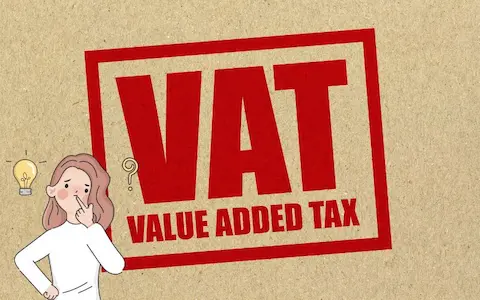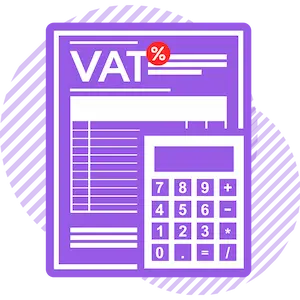Welcome to this comprehensive guide on Value-Added Tax (VAT) rates in the UK. Whether you are an entrepreneur, consumer, or simply interested in understanding UK taxes better, understanding VAT is of vital importance.
Why is understanding VAT rates essential? For businesses, mismanagement of VAT could incur financial penalties that hinder cash flow management; similarly for consumers it can impact daily spending decisions. From my personal experience I know that having a thorough knowledge of all VAT categories saves both time and money as well as alleviating stress levels significantly.
Standard Rate VAT
In essence, the Standard Rate of VAT is the default tax rate applied to most goods and services sold or provided within the UK, currently set at 20%.
The Standard Rate can be applied to an array of goods and services. These can range from electronics, new vehicles and food & drink to even some services provided by vendors who fall under HMRC guidelines. To make sure an item or service falls into this category.
As a consumer, I have found that the Standard Rate typically impacts big purchases such as new smartphones or laptops; when making my content creation budget calculations for one such purchase I had to account for an extra 20% tax charge.
Standard Rate VAT examples abound, from your favorite artisan coffee to purchasing a brand new television set and even services such as home renovation or consulting provided by professionals are often subject to this tax rate.
Reduced Rate VAT
Reduced Rate VAT refers to goods and services subject to a lower VAT rate, similarly Reduced Rate VAT allows companies with certain services to offer reduced VAT rates for certain goods and services.
Reduced Rate VAT (known in the UK as “RRPV”) is a reduced tax rate designed to make specific goods and services more cost-effective; such as utilities like electricity and gas as well as necessities like children’s car seats. It typically applies in England.
It is often applied to goods and services considered necessities or that contribute to social welfare. I installed a new heating system several years ago and was relieved to find it taxed at Reduced Rate VAT, alleviating some financial pressure in doing so.
Examples here would include home energy, sanitary hygiene products and mobility aids for elderly. When my grandparents needed a mobility scooter, we were delighted to discover it fell under the Reduced Rate category, making it more affordable.
Zero Rate VAT
Zero Rate VAT provides goods and services subject to tax at zero percent rate, it should be noted. However, that these zero-rated items differ significantly from VAT exempt items, more on this will follow shortly.
It typically applies to goods and services considered basic necessities, including food items, children’s clothing and certain forms of medication. I remember when my cousin had her first baby; she was delighted to find out that baby clothes were zero-rated, making the expenses of motherhood easier to bear.
Books, newspapers and public transport services all qualify as Zero Rate VAT items. I frequently travel by train for content creation work and find this relief valuable financially.
Exempt from VAT
Once we have familiarised ourselves with Standard, Reduced, and Zero Rate VATs. Let’s focus on an area which often causes confusion: Exempt from VAT.
Being exempt from VAT means that a good or service is exempt from all forms of Value-Added Tax, such as zero rating. But it should be remembered that VAT-exemption differs significantly from zero rating; they’re separate categories.
Goods and services that fall under this category often include education services, insurance policies, and most forms of healthcare. A few years ago, when I signed up for a professional development course thinking the VAT would stretch my budget too far, I was delighted to find it was exempt – leaving me some extra funds for additional learning materials.
*Difference between Zero Rate VAT and Exempt VAT
My cousin who operates as a healthcare provider finds this aspect particularly challenging as healthcare services are exempt from VAT reclaim, while zero-rated items allow businesses to reclaim VAT on related purchases. My cousin finds it particularly challenging that healthcare services don’t qualify for any VAT reimbursement on medical supplies that he purchases as medical care is exempt.
Special VAT Schemes
Beyond the main categories of VAT rates, there are also Special VAT Schemes designed to facilitate business processes in specific industries.
Flat Rate Scheme
The Flat Rate Scheme enables small businesses to pay HMRC a set rate of VAT each month instead of being subject to per transaction VAT calculations. I know of someone who uses the Flat Rate Scheme for her consulting service business to streamline her accounting practices.
Margin Scheme
The Margin Scheme is often utilized when purchasing secondhand goods and applies VAT only on its margin, which is defined as the difference between what you paid for an item and its selling price. I first learned about this scheme while researching ways to manage its transaction financially when selling used camera.
Retail Scheme for VAT Calculation
This scheme can be especially helpful to retailers who make many daily transactions; this method enables them to calculate their VAT due as a percentage of total sales over an entire period instead of on every individual sale.
Discovering Special VAT Schemes can give you more control in how you manage your finances. While not suitable for everyone, Special VAT Schemes provide much-needed relief from the complex world of VAT management.
How Can I Determine Which Rate To Apply

As we negotiate through the maze of VAT types and special schemes, a common question arises regarding which VAT rate should apply – both businesses and consumers face this question with equal importance.
Tips for Businesses
Businesses should consult HMRC guidelines to gain an in-depth knowledge of which rate applies to their goods or services. My friend who owns a small coffee shop found himself confused as he attempted to decide between charging Standard Rate or Reduced Rate VAT on takeaway items; consulting HMRC guidelines helped him make an informed decision.
Note the Importance of Maintaining Records
Record-keeping cannot be stressed enough as an essential business practice and consumer practice. Businesses are required by regulation to record which VAT rates were applied during transactions, while it’s recommended for consumers to keep receipts from any major purchases they make. My own experience has taught me the value of keeping track of VAT payments, especially for filing tax returns or even claiming refunds or warranties later on!
Conclusion
We have covered every facet of UK VAT system from its Standard Rate all the way through Reduced, Zero and Exempt rates to less well-known but potentially useful Special VAT Schemes that could benefit specific types of businesses.
By understanding the various VAT rates and when they apply, not only are you adhering to the law but you are taking proactive steps in terms of both financial planning and management for yourself or as a business owner.
With this guide in hand, you now have all of the essential knowledge to navigate the financial landscape in the UK. Remember that laws and rates may change at any time – to stay informed, check official guidelines or seek professional advice when necessary.

